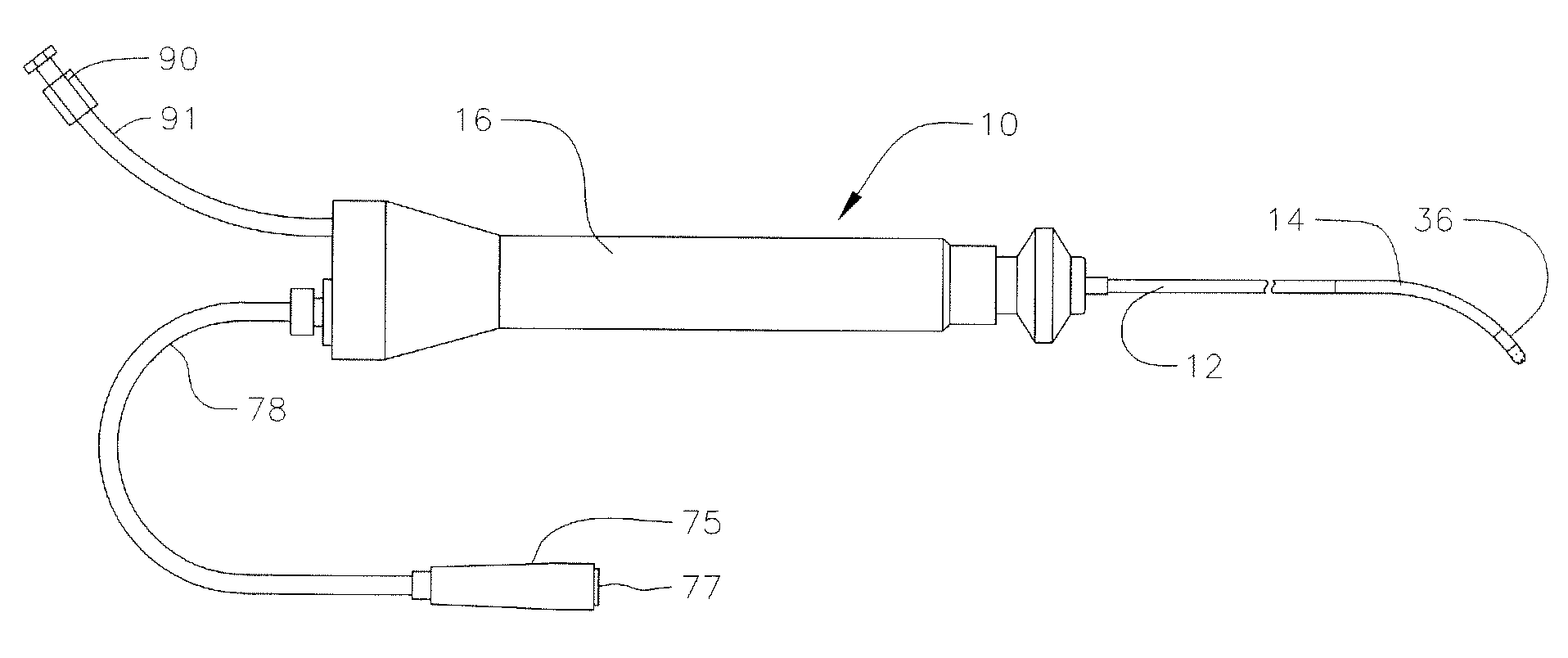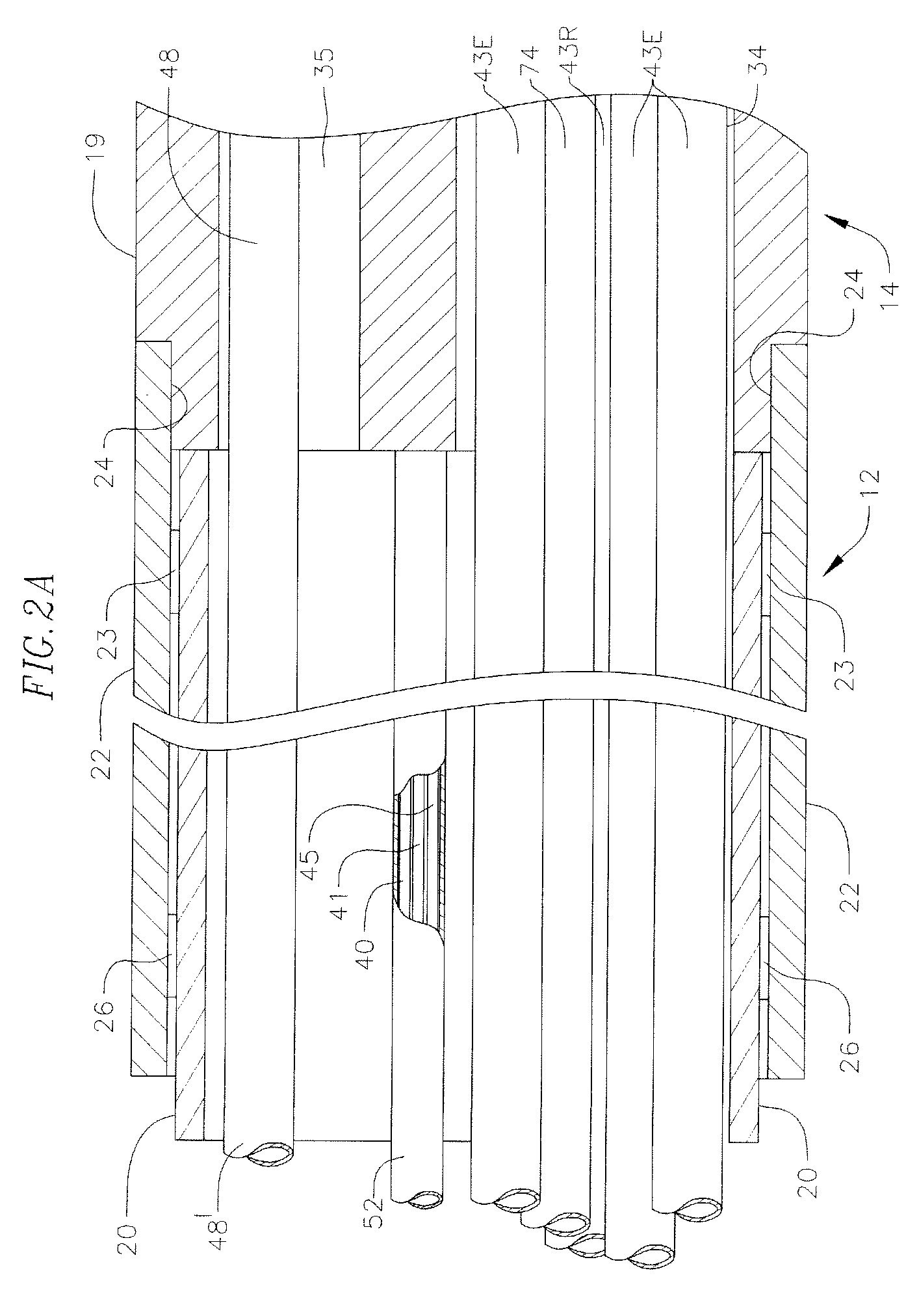Catheter with omni-Directional optical tip having isolated optical paths
a catheter and optical tip technology, applied in the field of catheters, can solve the problems of inability to obtain real-time information regarding the condition of the treatment site within the body, inability to provide information to the clinician, irregular heart beating, etc., to minimize damage caused by abrasion to the fiber optics, increase the operative life of the catheter, and minimize the effect of bend or strain
- Summary
- Abstract
- Description
- Claims
- Application Information
AI Technical Summary
Benefits of technology
Problems solved by technology
Method used
Image
Examples
Embodiment Construction
[0040]The catheter 10 of the present invention is adapted to facilitate optically-based real-time assessment of ablation tissue characteristics, including without limitation, lesion formation, depth of penetration of the lesion, cross-sectional area of the lesion, formation of char during ablation, recognition of char during ablation, differentiation of char from non-charred tissue, formation of coagulum around the ablation site, differentiation of coagulated from non-coagulated blood, differentiation of ablated from healthy tissue, tissue proximity, and recognition of steam formation in the tissue for prevention of steam pop. These assessments are accomplished by measuring the light intensity at one or more wavelengths that is recaptured at the catheter resulting from the light radiated from the catheter tip onto ablated tissue. Fiber optic cables are provided in the catheter to transmit light to and from the catheter tip.
[0041]As shown in FIGS. 1-13, catheter 10 of the present inv...
PUM
| Property | Measurement | Unit |
|---|---|---|
| Angle | aaaaa | aaaaa |
| Angle | aaaaa | aaaaa |
| Electrical conductivity | aaaaa | aaaaa |
Abstract
Description
Claims
Application Information
 Login to View More
Login to View More - R&D
- Intellectual Property
- Life Sciences
- Materials
- Tech Scout
- Unparalleled Data Quality
- Higher Quality Content
- 60% Fewer Hallucinations
Browse by: Latest US Patents, China's latest patents, Technical Efficacy Thesaurus, Application Domain, Technology Topic, Popular Technical Reports.
© 2025 PatSnap. All rights reserved.Legal|Privacy policy|Modern Slavery Act Transparency Statement|Sitemap|About US| Contact US: help@patsnap.com



